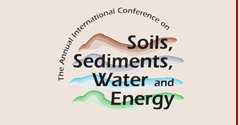Article Title
Abstract
Widely divergent cleanup targets, guidelines and standards for arsenic in soils have been established by many regulatory, scientific and advisory organizations in the past 25 years, both in the United States and in other countries. In contrast to many other substances, for which guidelines and standards are similar or identical among agencies, arsenic has provided a powerful study in just how many different ways a single issue can be viewed. This paper provides a detailed survey concerning the breadth of arsenic soil criteria that have been proposed and applied, and explores the basic differences in their derivation, which can be based upon toxicological properties, geological background levels, anthropogenic background contributions, and practical site-specific considerations. A broad comparison of extant values in common use for USEPA, individual states, and non-US entities will be presented, coupled with a discussion regarding common examples of the technical bases for arsenic soil cleanup guideline development. Arsenic target levels in many cases can dominate remedial considerations at sites where the applicable criteria are very stringent. Several case studies will be presented to illustrate the problems that are inherent in such variable criteria for this ubiquitous and extraordinarily common substance.
Recommended Citation
Teaf, Christopher M.; Covert, Douglas J.; Teaf, Patrick A.; Page, Emily; and Starks, Michael J.
(2010)
"Arsenic Cleanup Criteria for Soils in the US and Abroad: Comparing Guidelines and Understanding Inconsistencies,"
Proceedings of the Annual International Conference on Soils, Sediments, Water and Energy: Vol. 15, Article 10.
Available at:
https://scholarworks.umass.edu/soilsproceedings/vol15/iss1/10
